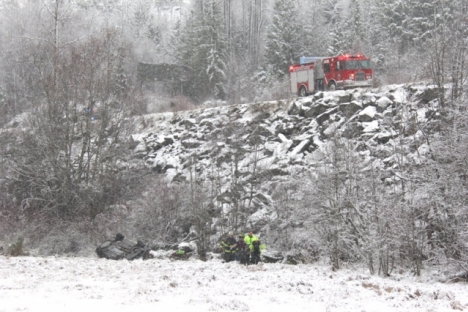Road conditions can change quickly, so be prepared to adjust driving
Road and weather conditions change quickly during winter. Drivers should be prepared to adjust their driving behaviour to match the conditions and address potential hazards.
On average, each year in British Columbia, the number of casualty crashes due to driving too fast for conditions doubles in December compared to October – approximately 236 crashes in December compared to approximately 117 in October (ICBC Annual Average Casualty Crashes due to Driving too Fast for Conditions 2011-2015 police reported data).
“Everyone on our roads and highways are trying to get to their destinations safely. British Columbia has unique terrain, and weather and road conditions that can change quickly,” said RCMP “E” Division Traffic Services Officer in Charge, Supt Derek Cooke.
“If we all plan ahead, give ourselves extra time to reach our destination, and have the proper equipment on our vehicles we can prevent unnecessary collisions, and ensure that everyone arrives alive.”
This trend extends to those who drive for work. Motor vehicle crashes are the leading cause of traumatic workplace death, and more crashes causing worker injury or death occur between October and February. (WorkSafeBC, 2016).
Be part of the solution:
- Slow down to a safe speed. Posted speed limits are for ideal conditions.
- Install 4 matched winter tires that display the 3-peak mountain snowflake symbol. Winter tires, or all-weather tires, offer the best traction for faster stopping time and shorter stopping distance in cold weather, snow, rain and on ice. In all conditions winter tires must have a minimum tread depth of 3.5 mm.
- For employers and supervisors, the Winter Driving Safety online course and Tool Kit on the Shift Into Winter website provides useful information for planning, implementing and monitoring a winter driving safety program.
Even the most confident and seasoned drivers are at risk when winter road and weather conditions change. Whether you drive for work or leisure now is the time to prepare.
Between October 1 and March 31, most B.C. highways require passenger vehicles to have 3-peak mountain snowflake tires and commercial vehicles to carry chains.
For more information about what you can do to be a safer driver this winter, visit ShiftIntoWinter.ca.

























Comments